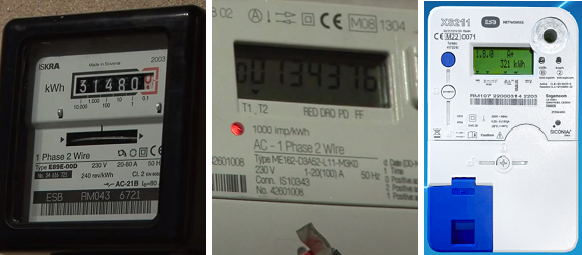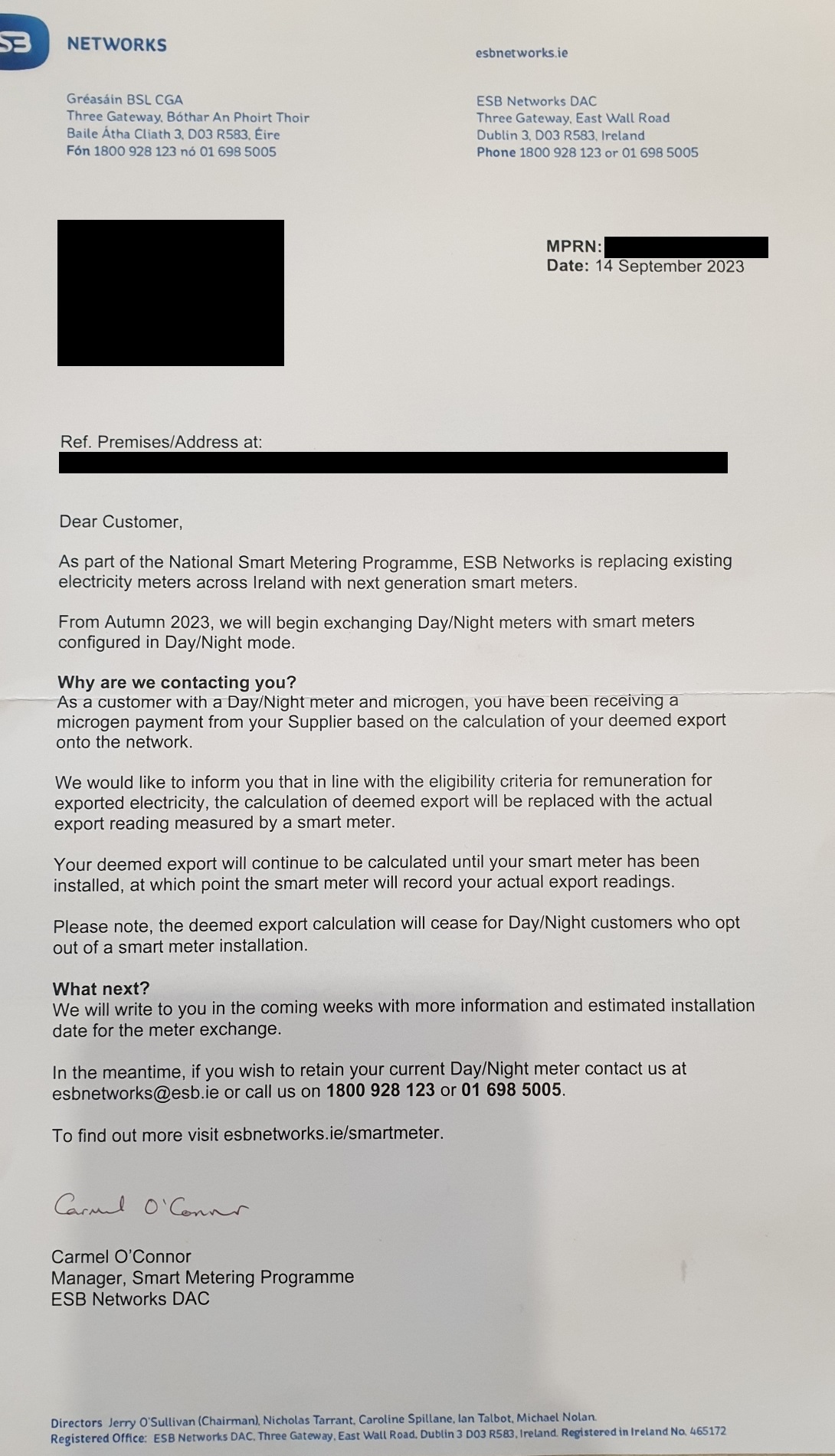Up to now, there were three basic options for your domestic electricity meter in Ireland. 1. The old rotating disc, 2. The electronic Day/Night meter, and 3. The new Smart Meter. There may be other variants, but these are the three main types.

For big electricity users, especially people with Battery Electric Vehicles (BEV) and Heat Pumps the new Smart Meters have been less than appealing. In fact something to be avoided. The reasons for this was the new Smart Tariffs had very little time allocated to lower price electricity compared to Day/Night Meters and could not be set to standard day/night operation. Typically, smart tariffs only have 2 or 3 hours at reduced night time rate with a higher peak rate between 5 and 7pm, whereas Day/Night meters have 8 hours every night at reduced rates and no peak penalty period. As for the old meters, the option to switch to new meters was somewhat a foregone conclusion until PV and Microgen came along.
To summarise, PV stands for Photo Voltaic and is the common term for putting Solar Panels on your roof or other suitable place to generate electricity. It may include a battery system to store power or connect to the grid using an inverter. Microgen is the term used to describe the payment from electricity suppliers for excess power not used by the home and exported to the grid. This scheme came into existance in February 2022 and is generally credited directly onto your electricity bill.
The PV Microgen Conundrum
Putting PV on your roof has been somewhat of a game changer for domestic electricity users. Depending on the amount of panels you put on your roof and your usage type the panels could deliver a fair percentage of the yearly power needs, especially during the day, and in the summer months can export excess power to the grid. Apart for saving money on electricity bills, with export prices in the region of 20c per kWh exported, this quickly became a reason to put extra panels on the roof and shorten payback times. For each type of electricity meter the options to change meter or not once PV was installed became trickier. Here’s why.
- The old rotating disc meters. Once an archaic piece of kit, in recent times they are prized by PV owners. Why? In times of excess power, the rotation of the disc reverses and the units clock down on your meter. What this means is that for every unit exported, the owner gets 100% of the PV value immediately at the same price they were paying. This was especially beneficial during periods of high electricity prices where people were saving in excess of 40c per unit exported. Very nice.
- Day/Night Meters could not track the electricy exported so the government forced suppliers to estimate exports based on averages and the size of the PV array and inverter, typically 200-300 euros per year in credits. These customers could still avail of excellent night rates, and unless they were exporting massive amounts of power, were getting credit for their power. Some customers, with storage batteries installed, BEV, and Heat Pumps, found they were getting paid more in estimated credits than they were exporting in reality. Nice. Moving to a Smart Meter was a bad idea.
- The new Smart Meters accurately measure the excess power exported and calculate credits. Apart from the meagre night rate period and high costs during peak hours there wasn’t too much to jump for joy about. Smart Meters suit homes with larger PV arrays and reduces the need to install costly storage batteries. It also suits homes without or with one BEV but not Heat Pumps. The excess price of electricity at peak times will always be seen as penalty to homes that do much of their cooking for the evening family meal.
The New New Smart Meters
To address the issue of people on older meters not wanting to move to Smart Meters the ESB has finally addressed the Day/Night Tariff issue. We hope. This letter has been sent to Day/Night meter owners in recent days.

So it would appear owners of the new Smart Meters can finally opt for a standard day night package, the carott. However, there is an ominous warning for not switching which may be viewed as the stick. For those exporting at or in excess of estimated values it would appear to be a reasonable move. It may even prompt energy suppliers to introduce new pricing structures to facilitate the growing electricfication of heating and transport. As to whether the energy suppliers continue to offer a day/night tarrif in future is the elephant in the room, there is always a real risk they will phase this out as the Day/Night meters disappear. As for the older disc meter owners, the old saying comes to mind, “If it ain’t broke don’t fix it”, to finish on a pun, they are likely to be the last to switch.
